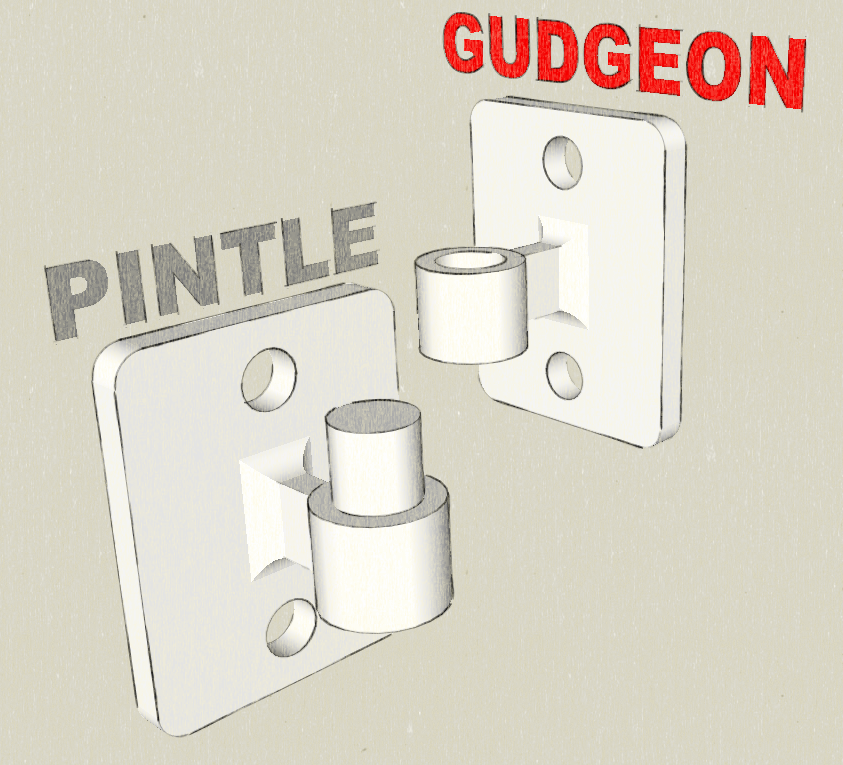|
Holmdel Horn Antenna
The Holmdel Horn Antenna is a large microwave horn antenna that was used as a satellite communication antenna and radio telescope during the 1960s at the Bell Telephone Laboratories facility located on Crawford Hill in Holmdel Township, New Jersey, United States. It was designated a National Historic Landmark in 1989 because of its association with the research work of two radio astronomers, Arno Penzias and Robert Wilson. In 1965, while using this antenna, Penzias and Wilson discovered the cosmic microwave background radiation (CMBR) that permeates the universe. This was one of the most important discoveries in physical cosmology since Edwin Hubble demonstrated in the 1920s that the universe was expanding. It provided the evidence that confirmed George Gamow's and Georges Lemaître's "Big Bang" theory of the creation of the universe. This helped change the science of cosmology, the study of the universe's history, from a field for unlimited theoretical speculation into ... [...More Info...] [...Related Items...] OR: [Wikipedia] [Google] [Baidu] |
Holmdel Township, New Jersey
Holmdel is a township in Monmouth County, in the U.S. state of New Jersey. Located near Raritan Bay in the Raritan Valley Region, the township is a regional commercial hub of Central Jersey, home to Bell Labs and PNC Bank Arts Center, and a bedroom community of New York City in the New York Metropolitan Area. As of the 2020 U.S. census, the township's population was 17,400, an increase of 627 (+3.7%) from the 2010 census count of 16,773, which in turn reflected an increase of 992 (+6.3%) from the 15,781 counted in the 2000 census. Holmdel Township was formed by an act of the New Jersey Legislature on February 23, 1857, from portions of Raritan Township (now Hazlet).Snyder, John P''The Story of New Jersey's Civil Boundaries: 1606-1968'' Bureau of Geology and Topography; Trenton, New Jersey; 1969. p. 180. Accessed May 29, 2024. The origin of the township's name is unclear, with some sources indicating that it was named for the Holmes family, who were early settlers of the ... [...More Info...] [...Related Items...] OR: [Wikipedia] [Google] [Baidu] |
Big Bang
The Big Bang is a physical theory that describes how the universe expanded from an initial state of high density and temperature. Various cosmological models based on the Big Bang concept explain a broad range of phenomena, including the abundance of light elements, the cosmic microwave background (CMB) radiation, and large-scale structure. The uniformity of the universe, known as the horizon and flatness problems, is explained through cosmic inflation: a phase of accelerated expansion during the earliest stages. A wide range of empirical evidence strongly favors the Big Bang event, which is now essentially universally accepted.: "At the same time that observations tipped the balance definitely in favor of the relativistic big-bang theory, ..." Detailed measurements of the expansion rate of the universe place the Big Bang singularity at an estimated billion years ago, which is considered the age of the universe. Extrapolating this cosmic expansion backward in ... [...More Info...] [...Related Items...] OR: [Wikipedia] [Google] [Baidu] |
Elevation Angle
The horizontal coordinate system is a celestial coordinate system that uses the observer's local horizon as the fundamental plane to define two angles of a spherical coordinate system: altitude and ''azimuth''. Therefore, the horizontal coordinate system is sometimes called the az/el system, the alt/az system, or the alt-azimuth system, among others. In an altazimuth mount of a telescope, the instrument's two axes follow altitude and azimuth. Definition This celestial coordinate system divides the sky into two hemispheres: The upper hemisphere, where objects are above the horizon and are visible, and the lower hemisphere, where objects are below the horizon and cannot be seen, since the Earth obstructs views of them. The great circle separating the hemispheres is called the ''celestial horizon'', which is defined as the great circle on the celestial sphere whose plane is normal to the local gravity vector (the vertical direction). In practice, the horizon can be defined as th ... [...More Info...] [...Related Items...] OR: [Wikipedia] [Google] [Baidu] |
Azimuth
An azimuth (; from ) is the horizontal angle from a cardinal direction, most commonly north, in a local or observer-centric spherical coordinate system. Mathematically, the relative position vector from an observer ( origin) to a point of interest is projected perpendicularly onto a reference plane (the horizontal plane); the angle between the projected vector and a reference vector on the reference plane is called the azimuth. When used as a celestial coordinate, the azimuth is the horizontal direction of a star or other astronomical object in the sky. The star is the point of interest, the reference plane is the local area (e.g. a circular area with a 5 km radius at sea level) around an observer on Earth's surface, and the reference vector points to true north. The azimuth is the angle between the north vector and the star's vector on the horizontal plane. Azimuth is usually measured in degrees (°), in the positive range 0° to 360° or in the signed ... [...More Info...] [...Related Items...] OR: [Wikipedia] [Google] [Baidu] |
Pintle
A pintle is a pin or bolt, usually inserted into a gudgeon, which is used as part of a pivot or hinge. Other applications include pintle and lunette ring for towing, and pintle pins securing casters in furniture. Use Pintle/gudgeon sets have many applications, for example in sailing, to hold the rudder onto the boat; in transportation, in which a pincer-type device clamps through a lunette ring on the tongue of a trailer; and in controllable solid rocket motors, in which a plug moves into and out of the motor throat to control thrust. In electrical cubicle manufacture, a pintle hinge is a hinge with fixed and moving parts. The hinge has a pin - the pintle - which can be both external and internal. The most common type consists of three parts, one part on the body of the cubicle, one part on the door, and the third being the pintle. In transportation, a ''pintle hitch'' is a type of tow hitch that uses a tow ring configuration to secure to a hook or a ball combination for the ... [...More Info...] [...Related Items...] OR: [Wikipedia] [Google] [Baidu] |
Radiant Energy
In physics, and in particular as measured by radiometry, radiant energy is the energy of electromagnetic radiation, electromagnetic and gravitational radiation. As energy, its SI unit is the joule (J). The quantity of radiant energy may be calculated by Integral, integrating radiant flux (or radiant flux, power) with respect to time. The symbol ''Q''e is often used throughout literature to denote radiant energy ("e" for "energetic", to avoid confusion with photometric quantities). In branches of physics other than radiometry, electromagnetic energy is referred to using ''E'' or ''W''. The term is used particularly when electromagnetic radiation is emitted by a source into the surrounding environment. This radiation may be visible or invisible to the human eye. Terminology use and history The term "radiant energy" is most commonly used in the fields of radiometry, solar energy, heating and lighting, but is also sometimes used in other fields (such as telecommunications). In modern ... [...More Info...] [...Related Items...] OR: [Wikipedia] [Google] [Baidu] |
Radiometry
Radiometry is a set of techniques for measurement, measuring electromagnetic radiation, including visible light. Radiometric techniques in optics characterize the distribution of the radiation's power (physics), power in space, as opposed to photometry (optics), photometric techniques, which characterize the light's interaction with the human eye. The fundamental difference between radiometry and photometry is that radiometry gives the entire optical radiation spectrum, while photometry is limited to the visible spectrum. Radiometry is distinct from quantum optics, quantum techniques such as photon counting. The use of radiometers to determine the temperature of objects and gasses by measuring radiation flux is called pyrometry. Handheld pyrometer devices are often marketed as infrared thermometers. Radiometry is important in astronomy, especially radio astronomy, and plays a significant role in Earth remote sensing. The measurement techniques categorized as ''radiometry'' in op ... [...More Info...] [...Related Items...] OR: [Wikipedia] [Google] [Baidu] |
Ball Bearing
A ball bearing is a type of rolling-element bearing that uses balls to maintain the separation between the bearing races. The purpose of a ball bearing is to reduce rotational friction and support radial and axial loads. It achieves this by using at least two races to contain the balls and transmit the loads through the balls. In most applications, one race is stationary and the other is attached to the rotating assembly (e.g., a hub or shaft). As one of the bearing races rotates it causes the balls to rotate as well. Because the balls are rolling, they have a much lower coefficient of friction than if two flat surfaces were sliding against each other. Ball bearings tend to have lower load capacity for their size than other kinds of rolling-element bearings due to the smaller contact area between the balls and races. However, they can tolerate some misalignment of the inner and outer races. Common ball bearing designs include ''angular contact, axial, deep-groove,'' an ... [...More Info...] [...Related Items...] OR: [Wikipedia] [Google] [Baidu] |
Aluminum
Aluminium (or aluminum in North American English) is a chemical element; it has chemical symbol, symbol Al and atomic number 13. It has a density lower than that of other common metals, about one-third that of steel. Aluminium has a great affinity towards oxygen, passivation (chemistry), forming a protective layer of aluminium oxide, oxide on the surface when exposed to air. It visually resembles silver, both in its color and in its great ability to reflect light. It is soft, magnetism, nonmagnetic, and ductility, ductile. It has one stable isotope, 27Al, which is highly abundant, making aluminium the abundance of the chemical elements, 12th-most abundant element in the universe. The radioactive decay, radioactivity of aluminium-26, 26Al leads to it being used in radiometric dating. Chemically, aluminium is a post-transition metal in the boron group; as is common for the group, aluminium forms compounds primarily in the +3 oxidation state. The aluminium cation Al3+ ... [...More Info...] [...Related Items...] OR: [Wikipedia] [Google] [Baidu] |
Radiating Aperture
In electromagnetics and antenna theory, the aperture of an antenna is defined as "A surface, near or on an antenna, on which it is convenient to make assumptions regarding the field values for the purpose of computing fields at external points. The aperture is often taken as that portion of a plane surface near the antenna, perpendicular to the direction of maximum radiation, through which the major part of the radiation passes." Effective area The effective area of an antenna is defined as "In a given direction, the ratio of the available power at the terminals of a receiving antenna to the power flux density of a plane wave incident on the antenna from that direction, the wave being polarization matched to the antenna." Of particular note in this definition is that both effective area and power flux density are functions of incident angle of a plane wave. Assume a plane wave from a particular direction (\theta, \phi), which are the azimuth and elevation angles relative to the a ... [...More Info...] [...Related Items...] OR: [Wikipedia] [Google] [Baidu] |
Satellite Balloon
A balloon satellite, sometimes referred to as a "satelloon", is a satellite inflated with gas after it has been put into orbit. Echo 1 and Echo 2 balloon satellites The first flying body of this type was Echo 1, which was launched into a high orbit on August 12, 1960, by the United States. It originally had a spherical shape measuring , with a thin metal-coated plastic shell made of Mylar. It served for testing as a "passive" communication and geodetic satellite. One of the first radio contacts using the satellite was successful at a distance of nearly (between the east coast of the US and California). By the time Echo 1 burned up in 1968, the measurements of its orbit by several dozen earth stations had improved our knowledge of the precise shape of the planet by nearly a factor of ten. Its successor was the similarly built Echo 2 (1964 to about 1970). This satellite circled the Earth about lower, not at an angle of 47° like that of Echo 1, but in a polar orbit with ... [...More Info...] [...Related Items...] OR: [Wikipedia] [Google] [Baidu] |
National Aeronautics And Space Administration
The National Aeronautics and Space Administration (NASA ) is an independent agency of the US federal government responsible for the United States's civil space program, aeronautics research and space research. Established in 1958, it succeeded the National Advisory Committee for Aeronautics (NACA) to give the American space development effort a distinct civilian orientation, emphasizing peaceful applications in space science. It has since led most of America's space exploration programs, including Project Mercury, Project Gemini, the 1968–1972 Apollo program missions, the Skylab space station, and the Space Shuttle. Currently, NASA supports the International Space Station (ISS) along with the Commercial Crew Program and oversees the development of the Orion spacecraft and the Space Launch System for the lunar Artemis program. NASA's science division is focused on better understanding Earth through the Earth Observing System; advancing heliophysics through the effor ... [...More Info...] [...Related Items...] OR: [Wikipedia] [Google] [Baidu] |






